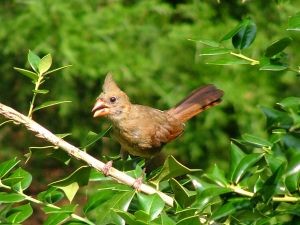Photo by Hermes Rivera on Unspash
My younger daughter Annalisa during her third year of life started talking about “Z Street.” We had no idea what she was talking about, but it was nonetheless interesting. There were apparently all sorts of things and many different stores on Z Street. Most of her sentences began with “On Z Street, there is…” or “On Z Street, they have…”. I asked her late on one afternoon if she knew where Z Steet was. She answered, “Sure!” I said, “Okay. Show me.” We jumped in the car and a couple of minutes later we were on the road while Annalisa eerily prefigured a talking GPS unit, telling me, with steadily decreasing confidence, to turn right at the next light, then left at the next corner and so on and so forth. We ultimately arrived behind a shopping center where we found ourselves parked by a couple of dumpsters and several stacks of palettes behind a Kroger. “So this is it?” I asked. Annalisa told me yes, with some hesitation. It was all good. Z Street had a Jersey Mike’s nearby, and the Hartlaub family had a fine meal to top off the journey. Annalisa, for her part, never mentioned Z Street again, opting instead to talk about her “owl friend.”
More on the owl friend in a bit. Annalisa’s directions to Z Street were a terrific example of the writing process known as “pantsing.” She had a concept in her head which told her what Z Street was but really no idea of how to get there. She comes by this honestly. I am horrible at outlining, which in part is why in my longer work I more often than not found myself…well, sitting at the rump end of someplace and looking at the mental equivalence of pallets and dumpsters. This isn’t the case with every author, of course. James Lee Burke reportedly has no idea about what his next book is going to be about until he starts writing, yet he arguably writes better than anyone. I don’t think that Cormac McCarthy outlines either. Jeffery Deaver, however, outlines obsessively, spending as much time outlining as he does writing the novel, year in and year out. It certainly has held him in wonderful stead.
I had an epiphany a few weeks ago about all of this when I suddenly realized how to get over a roadblock in a novel I’ve been working on for a bit now. Part of the epiphany included the unfortunate realization that the roadblock didn’t just suddenly appear in the story. I had, at some earlier point in the narrative, snuck ahead and built it without realizing it and without building a reasonable detour around it. I could have solved all of that by outlining, but let’s not forget…(cue up the chorus)… “I am horrible at outlining.”
What I want to report — to share with you — is that I worked my way around it. I thought about Z Street, and how I travel. I drive everywhere, and don’t like getting lost, so I map out my journey. I check hotel prices and distances and gas stations and how far it is between Cracker Barrels and Sonics and how long it’s going to take me to get where I’m going. Oh, and speed traps. I check for speed traps. Some folks use AAA, but I do it myself. The realization hit me: what is outlining, if it isn’t a self-made Triptik, or map, for writers?
I’m outlining now. What I do more resembles a map than an outline like you might use, but it’s getting me there. And if I want to pull away from what I have outlined and take a scenic diversion, why, that’s okay too. It’s my trip. I hope to tell you about it sooner rather than later.
I have one more thing, in case some of you are wondering about “the owl friend.” It became a constant source of reference for Annalisa. Accordingly, while on a family vacation in New Orleans a few months later, we were in the Audubon Aquarium of the Americas and walked into the aviary. “Look, Annalisa,” I said, point up toward the top of a sloping rock wall, at a wise old bird sitting quietly on a ledge. “Is that your owl friend?” Annalisa immediately detached herself from me and started scampering up the wall on all fours. She almost got away from me on that one. The owl reacted by peering imperiously down at us, as if to say, “Whaddya want from me?” I of course had no answer, nor did Annalisa when I asked her, “So. What would you have done with him when you got him?”
Enough about me. Let’s talk about you. Are you outlining your story/Great American Novel? How are you doing it? In the traditional manner, like Jim Bell learned (and I didn’t) in Catholic school? With post it notes on a giant bulletin board (Yo! P.J. Parrish!) As if it is a map? Or some other way? Please share.


